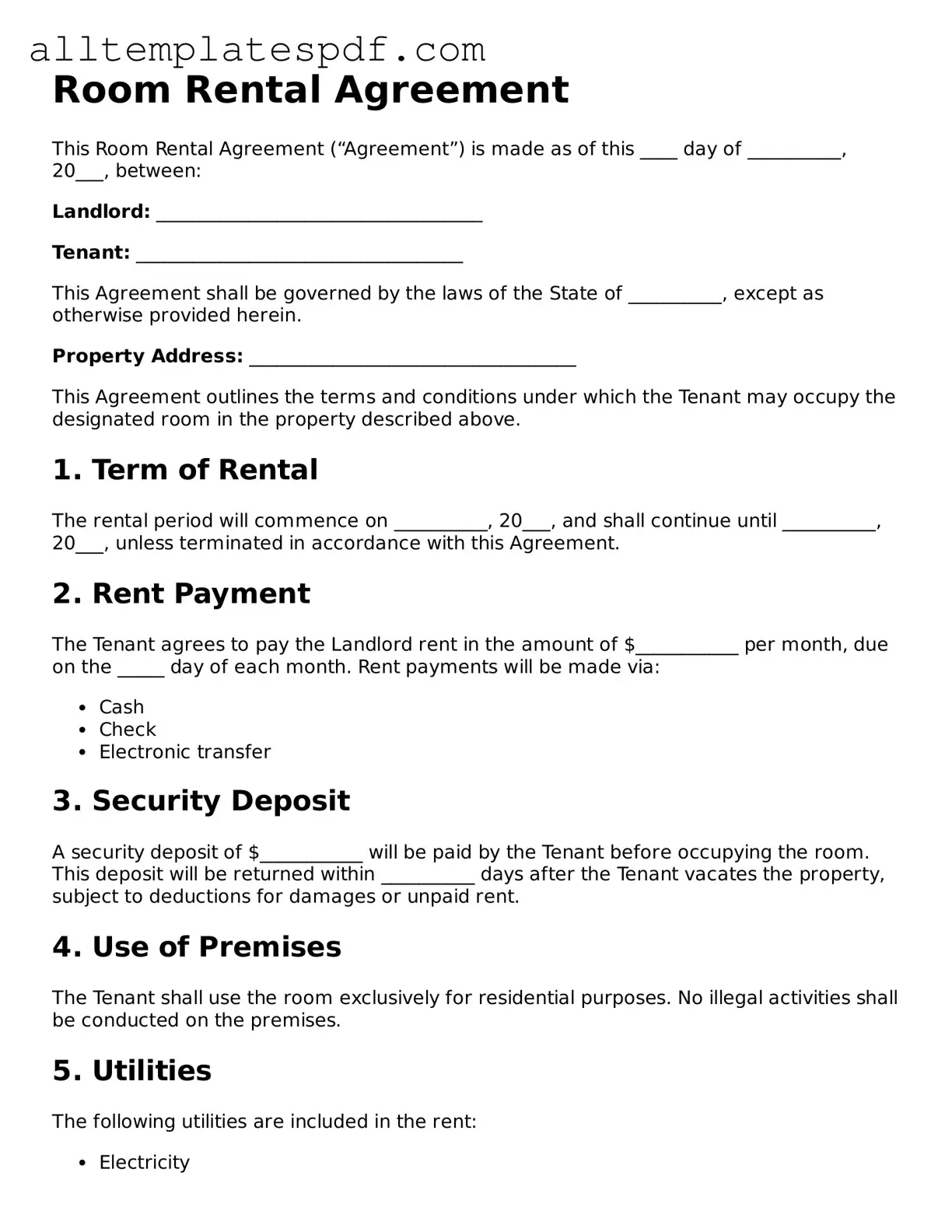Filling out a Room Rental Agreement can seem straightforward, but many people make common mistakes that can lead to misunderstandings or disputes later on. One frequent error is not providing accurate personal information. Ensure that names, addresses, and contact details are correct. An incorrect phone number or email can hinder communication and create unnecessary complications.
Another mistake is overlooking the rental amount. It’s crucial to clearly state the rent due, the payment schedule, and any late fees. Failure to specify these details can lead to confusion and disputes about what is owed and when. Always double-check that the figures match any verbal agreements made with the landlord or tenant.
People often forget to include the duration of the rental agreement. Specify the start and end dates clearly. Without these dates, it may be unclear when the agreement begins and ends, leading to potential issues regarding tenancy and eviction.
Additionally, many overlook the importance of outlining the security deposit terms. Clearly state the amount of the deposit, the conditions for its return, and any deductions that may apply. This clarity can prevent conflicts when the rental period ends.
Another common error is neglecting to list the responsibilities of both the landlord and the tenant. Clearly defining maintenance responsibilities, utility payments, and other obligations can help avoid disputes later on. Each party should know what is expected of them.
Some individuals fail to read the entire agreement before signing. Skimming through important sections can lead to misunderstandings. Take the time to review all terms and conditions thoroughly. If something is unclear, ask for clarification.
People also often forget to include any additional agreements or special conditions. If there are specific arrangements, such as pet policies or alterations to the property, these should be documented in the agreement. Omitting this information can lead to disputes later.
Another mistake is not keeping a copy of the signed agreement. After signing, both parties should retain a copy for their records. This ensures that everyone has access to the same information and can refer back to it if needed.
Lastly, many fail to update the agreement if circumstances change. If there are modifications to the rental terms, such as a rent increase or a change in the duration of the lease, these should be documented and signed by both parties. Keeping the agreement current is essential for maintaining a good landlord-tenant relationship.
